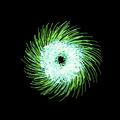Template:Selected anniversaries/September 16: Difference between revisions
No edit summary |
No edit summary |
||
| Line 30: | Line 30: | ||
||1925: Alexander Friedmann born ... physicist and mathematician. Pic. | ||1925: Alexander Friedmann born ... physicist and mathematician. Pic. | ||
||1932: Ronald Ross dies ... physician and mathematician, Nobel Prize laureate. | ||1932: Ronald Ross dies ... physician and mathematician, Nobel Prize laureate. Pic. | ||
||1946: James Jeans dies ... physicist, astronomer, and mathematician. Pic. | ||1946: James Jeans dies ... physicist, astronomer, and mathematician. Pic. | ||
| Line 42: | Line 42: | ||
File:The Eel Time-Surfing.jpg|link=The Eel Time-Surfing|1964: Signed first edition of ''[[The Eel Time-Surfing]]'' sells for two hundred and fifty thousand dollars. | File:The Eel Time-Surfing.jpg|link=The Eel Time-Surfing|1964: Signed first edition of ''[[The Eel Time-Surfing]]'' sells for two hundred and fifty thousand dollars. | ||
||1971: Agnes Meyer Driscoll dies ... cryptanalyst during both World War I and World War II. Edwin T. Layton described her as "without peer as a cryptanalyst". | ||1971: Agnes Meyer Driscoll dies ... cryptanalyst during both World War I and World War II. Edwin T. Layton described her as "without peer as a cryptanalyst". Pic. | ||
||1975: Johannes Gaultherus van der Corput dies ... mathematician, working in the field of analytic number theory. He introduced the Van der Corput lemma, a technique for creating an upper bound on the measure of a set drawn from harmonic analysis, and the Van der Corput theorem on equidistribution modulo 1. Pic: https://www.ranker.com/review/johannes-van-der-corput/1298721 | ||1975: Johannes Gaultherus van der Corput dies ... mathematician, working in the field of analytic number theory. He introduced the Van der Corput lemma, a technique for creating an upper bound on the measure of a set drawn from harmonic analysis, and the Van der Corput theorem on equidistribution modulo 1. Pic: https://www.ranker.com/review/johannes-van-der-corput/1298721 | ||
| Line 56: | Line 56: | ||
Spinning_Thistle.jpg|link=Spinning Thistle (nonfiction)|2016: ''[[Spinning Thistle (nonfiction)|Spinning Thistle]]'' voted Picture of the Day by the citizens of [[New Minneapolis, Canada]]. | Spinning_Thistle.jpg|link=Spinning Thistle (nonfiction)|2016: ''[[Spinning Thistle (nonfiction)|Spinning Thistle]]'' voted Picture of the Day by the citizens of [[New Minneapolis, Canada]]. | ||
||2016: Gabriele Amorth dies ... priest and exorcist. | ||2016: Gabriele Amorth dies ... priest and exorcist. Pic search yes: https://www.google.com/search?q=gabriele+amorth | ||
</gallery> | </gallery> | ||
Revision as of 19:27, 3 April 2019
1736: Physicist and engineer Daniel Gabriel Fahrenheit dies. He helped lay the foundations for the era of precision thermometry by inventing the mercury-in-glass thermometer and the Fahrenheit scale.
1838: The Orcagna scrying engine, under contract to the House of Malevecchio, downloads Abū Sahl al-Qūhī's Perfect Compass protocol. Malevecchio will attempt to monopolize the protocol, but five years later the French will announce Compas Parfait; within fifty years, all of Christendom will have similar systems.
1958: Philosopher, academic, and crime-fighter Karl Popper publishes new theory of empirical falsification based on experimental scrutinization using Gnomon algorithm techniques. Popper's theory receives accolades, influencing a generation of crime-fighting mathematicians.
1964: Signed first edition of The Eel Time-Surfing sells for two hundred and fifty thousand dollars.
2005: Physicist and academic Gordon Gould dies. He invented and named the laser.
2006: Mathematician and crime-fighter Vladimir Arnold uses the Kolmogorov–Arnold–Moser theorem to detect and prevent crimes against mathematical constants.
2016: Spinning Thistle voted Picture of the Day by the citizens of New Minneapolis, Canada.






